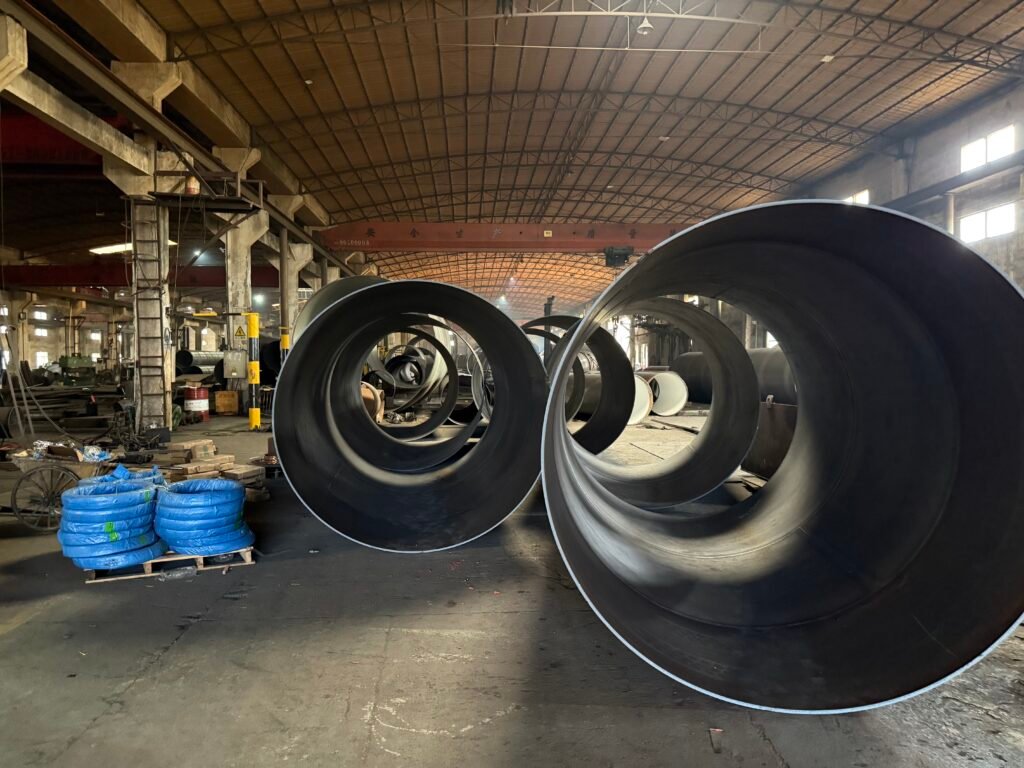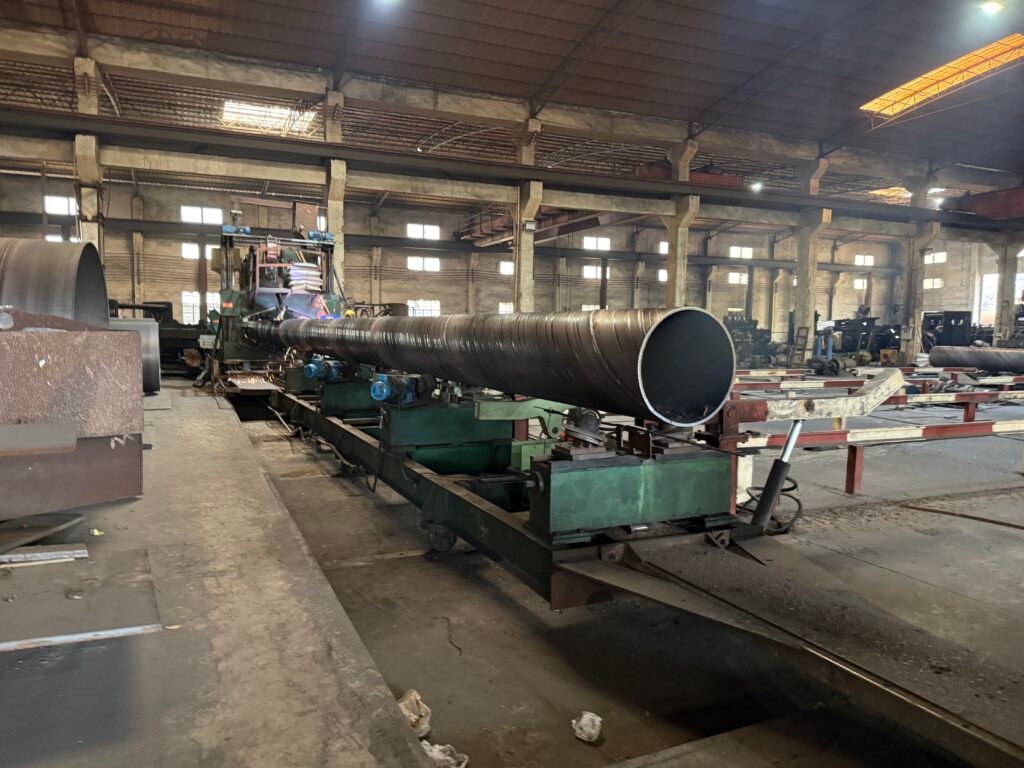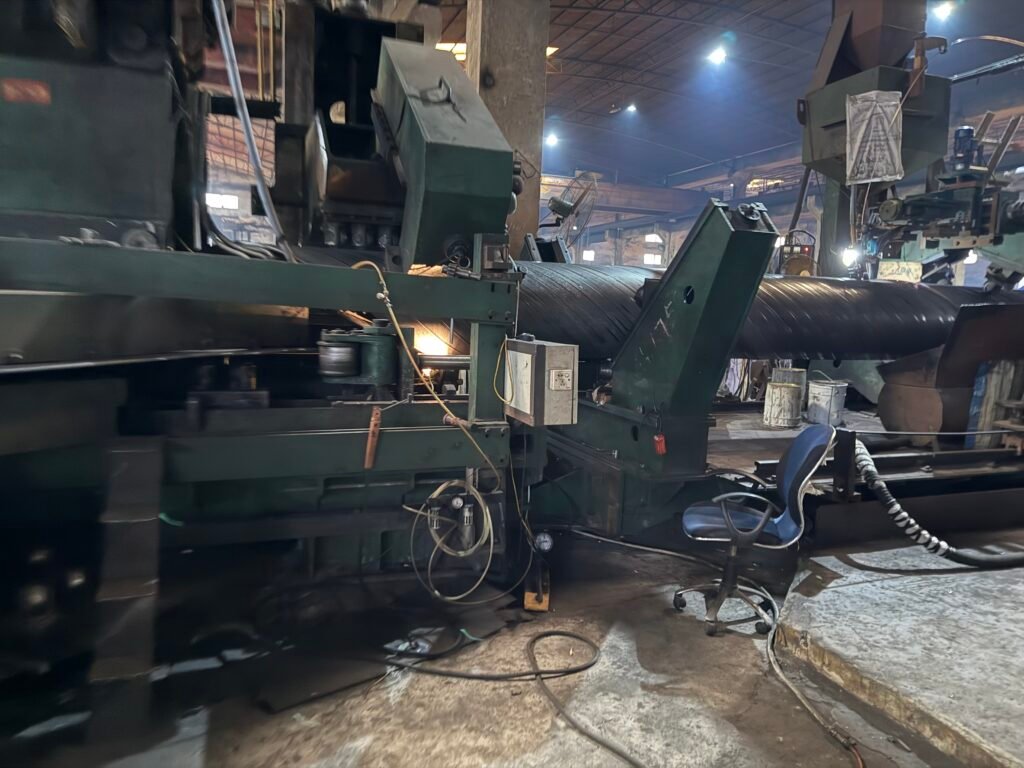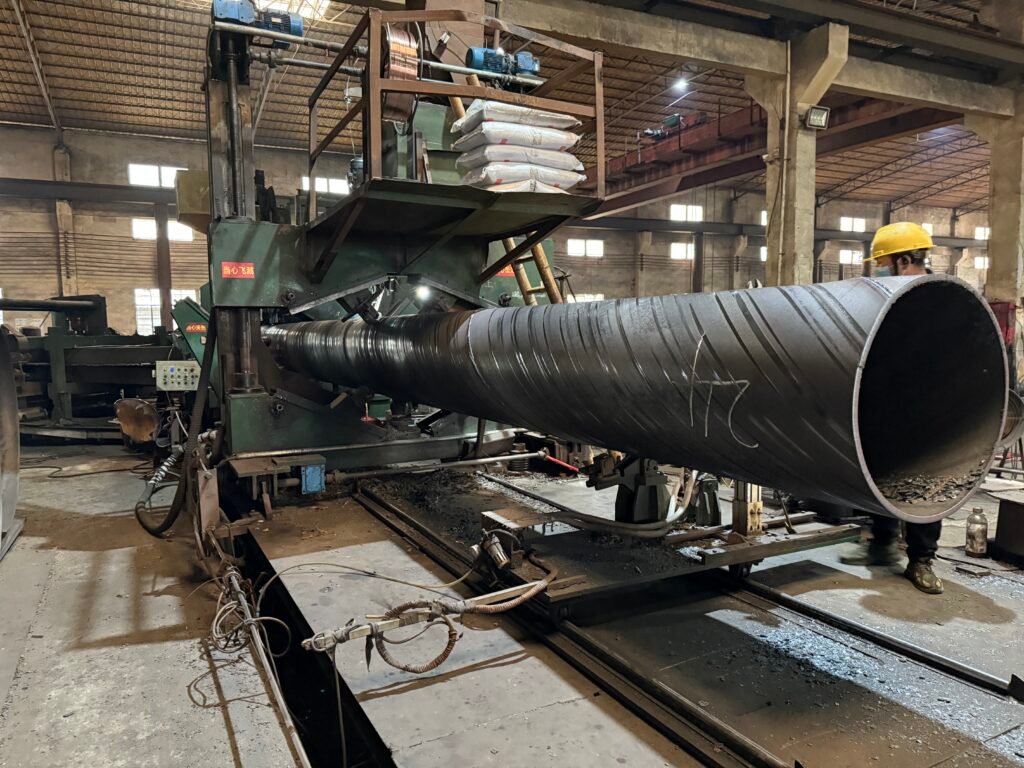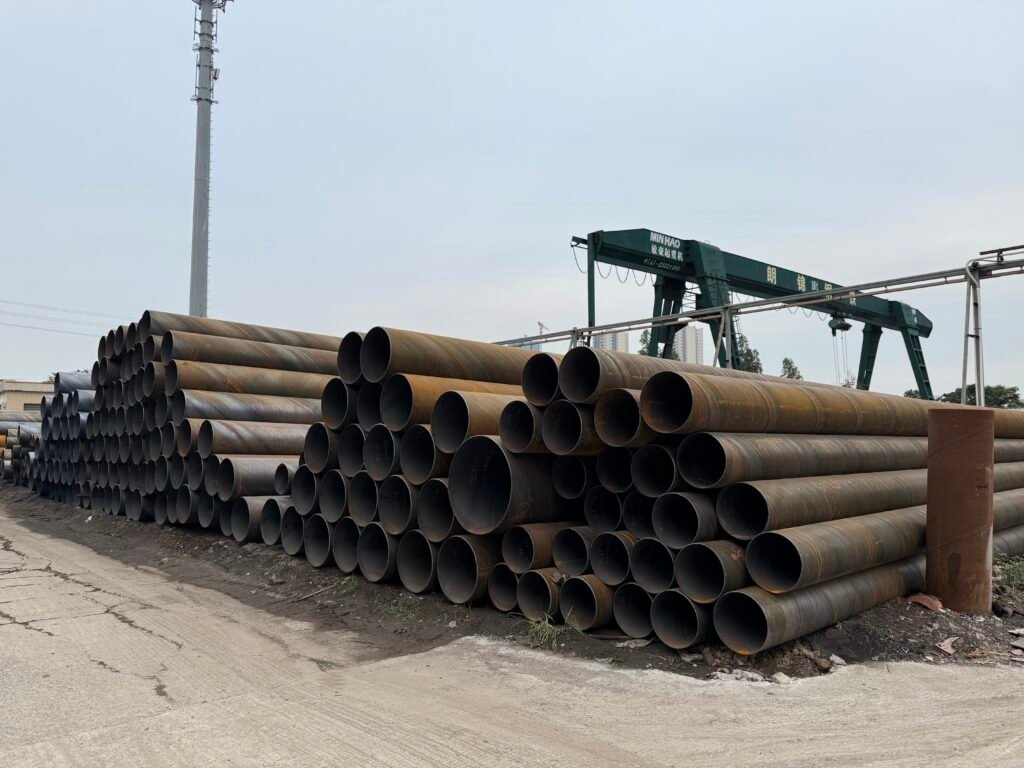
Spiral Pipe
Introduction
Spiral welded steel pipe (also known as helical seam welded pipe) is produced by continuously rolling steel strips into a cylindrical shape through a spiral forming process, with weld seams running spirally along the pipe’s length. This manufacturing method enables efficient production of large-diameter pipes, making it widely used in fluid transportation and structural applications.
Uses
1. Core Advantages




2. Key Specifications
- Diameter Range: DN200–DN3000 (approx. 219mm–3200mm outer diameter)
- Wall Thickness: 3mm–25mm (customizable based on pressure requirements)
- Length: Typically 6m–12m, with cutting to specific lengths available
- Material Grades: Carbon steel (e.g., Q235B, Q355B) or pipeline steel (e.g., L245, L360)
3. Production Process Flow
- Steel Coil Uncoiling: Leveling and cutting steel strips to required width
- Spiral Forming: Rolling steel strips into a helical cylindrical shape
- Internal & External Welding: Multi-wire submerged arc welding for simultaneous inner and outer seams
- Weld Seam Treatment: Grinding and non-destructive testing (ultrasonic/X-ray inspection)
- Sizing & Straightening: Ensuring roundness and straightness of the pipe body
- Cutting & Inspection: Cutting to specified lengths and conducting final quality checks
4. Main Applications





